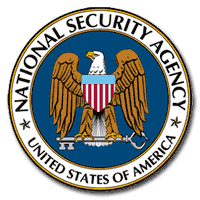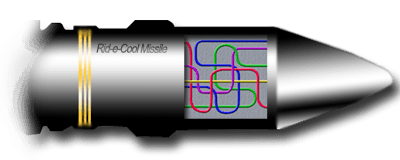History of the NSA
Highlights of the history of the National Security Agency (NSA)

On May 20, 1949 the Armed Forces Security Agency (AFSA) was created by a secret order from the defense secretary. It came under the command of the Joint Chiefs of Staff. The purpose of AFSA was to coordinate all electronic communications and intelligence between agencies like Naval Security Group, Air Force Security Service and Army Security Agency. However, rivalry between various agencies made the task of ASFA difficult. This lack of centralized coordination mechanism led to the reorganization of AFSA.
President Harry S. Truman, in June of 1952 authorized the creation of NSA in a confidential letter. Gen. Ralph Julian Canine, who was then the Secretary of Defense, became the first director of NSA. Initially the agencys headquarter was based in the Naval Security Station in DC and the Arlington Hall VA. The agency was shifting to its new HQ at Fort Meade in 1956, during the Suez Canal crisis.
The agencys response to the event was inadequate because it had few linguists and expertise in the region. This crisis caused reorganization inside NSA.
It was divided into geographic divisions for the sake of efficiency. In the late 50s, a number of listening posts were developed by the NSA all over the world. For example listening posts were built in turkey , in Ellesmere island 500 km from north pole, in Teufelsberg district in Berlin(one of the most important), Kamiseya listening post in Japan, Wheelus Air Base in Libya and many more.
In 1957 a radio telescope was built that was able to receive and transmit, radar and radio waves. NSA utilized this telescope to keep tabs on transmissions from foreign governments. The agencys spying was not limited to listening posts. NSA made spy ships and used U-2 airplanes to spy all over the world, especially USSR.
NSA opened joint processing centers in Japan, Germany and Hawaii in 1961. During the 60s the NSA provided Kennedys organized crime section important information about the mafia. It also provided the FBI information on Cuba. The 1962 Cuban missile crisis showed the level of sophistication achieved by the NSA and other intelligence agencies.
In 1967 NSA built a listening post on Diego Garcia in an attempt to enhance the worldwide Advanced Tactical Ocean Surveillance System along with many other important facilities around the globe. Because of better intelligence the NSA was able to provide warning of a huge North Vietnamese buildup before the Tet offensive. Again, in 1972 the NSA provided correct warning of another offensive by North Vietnam.
In 1975 the agency regained control of the Sugar Grove West Virginia facility controlled by the navy. It was converted into a satellite receiving station. In the same year NSA monitored Operation Comeout and reported on April 30 that the evacuation was complete. It had left behind cryptography machines. The Russians used the machines to their advantage because of a spy John Walker who sold secret codes to USSR. The NSA learned about this matter 10 years later.
In 1978 the NSA and CIA collaborated to create the Special Collection Service (SCS). The purpose of SCS was to deploy well trained agents, along with specialized equipment developed by NSA, on black bag missions. In 1979 the NSA had to destroy one of its listening posts in Iran after the Islamic revolution. In 1986 Ronald Pelton a former NSA employee, was found guilty of espionage on behalf of the Soviet Union.
NSA activity was not limited to foreign governments only. The agency used its Echelon eavesdrop system to protect American corporations from foreign espionage. This was demonstrated in 1995, when NSA provided U.S. negotiator Mickey Kantor with intercepts from two Japanese firms from their hotel rooms in Geneva. The failure of NSA to warn of Indian nuclear tests in 1998 was one of the biggest intelligence failures in the agencys history.
After the September 11, 2001 attacks in New York and Washington, NSA received new funding and powers under the PATRIOT Act to protect America from terrorism. In 2005 the New York Times reported that the National Security Agency, under pressure from the Bush administration, was eavesdropping on all calls made inside the USA to foreign countries without a warrant. This article was not published for a year. The white house told the newspaper administration that terrorists would be alerted from this article and the newspaper consented.
Go from NSA History to Secret Services
Go to Top Spy Secrets Homepage











New! Comments
Savvy spies can comment here... Just leave me a comment in the box below.